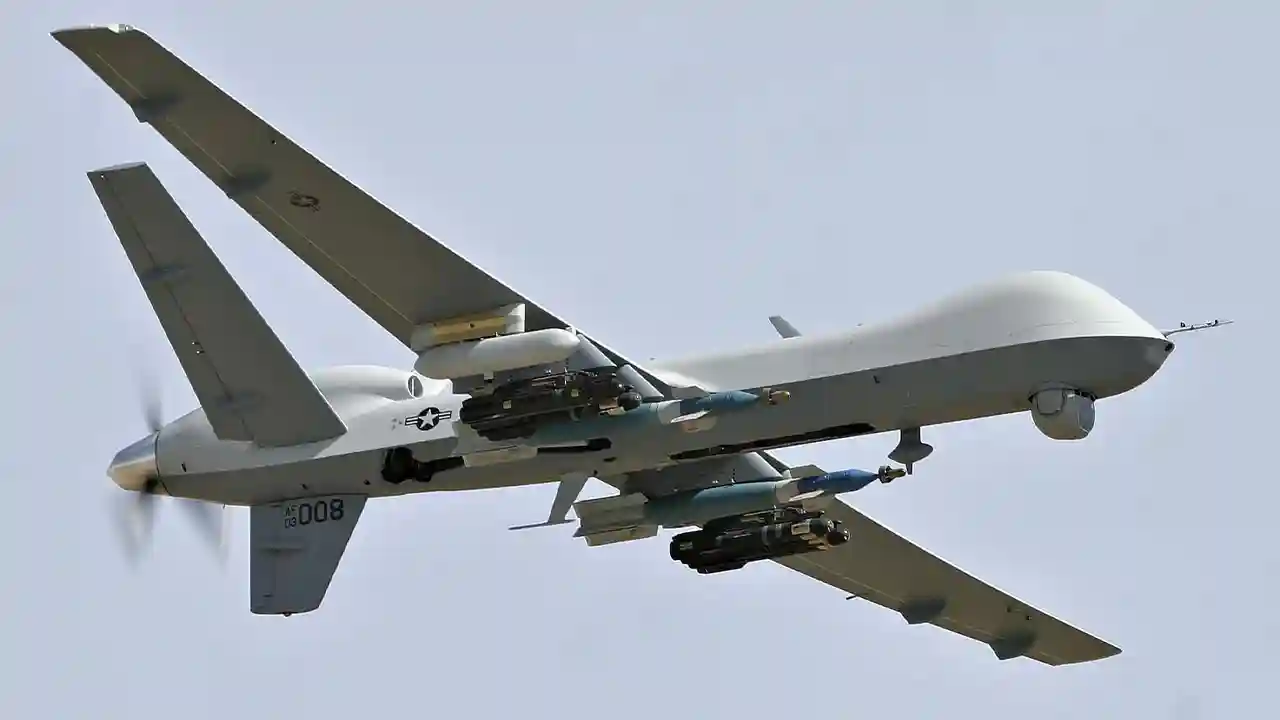Dronelost.com – Have you ever wondered what it takes to fly a drone that can strike targets with precision and accuracy from thousands of miles away? If you are curious about these questions, then you should learn more about the MQ-9 Reaper, the most advanced and lethal unmanned aerial vehicle (UAV) in the world.
The MQ-9 Reaper, also known as Predator B, is a remotely piloted aircraft (RPA) that is designed for intelligence, surveillance, reconnaissance (ISR), and attack missions. It is developed by General Atomics Aeronautical Systems (GA-ASI) primarily for the United States Air Force (USAF), but also used by other countries and agencies.
The MQ-9 Reaper is a larger, heavier, and more capable version of the MQ-1 Predator, the first UAV to be armed with missiles and bombs. The Reaper can carry 15 times more ordnance payload and cruise at three times the speed of the Predator.
It can also operate at higher altitudes and longer endurance, making it a formidable weapon in the modern battlefield. We will explore the history, features, performance, and future of the MQ-9 Reaper, and why it is considered the ultimate hunter-killer drone.
History of the MQ-9 Reaper
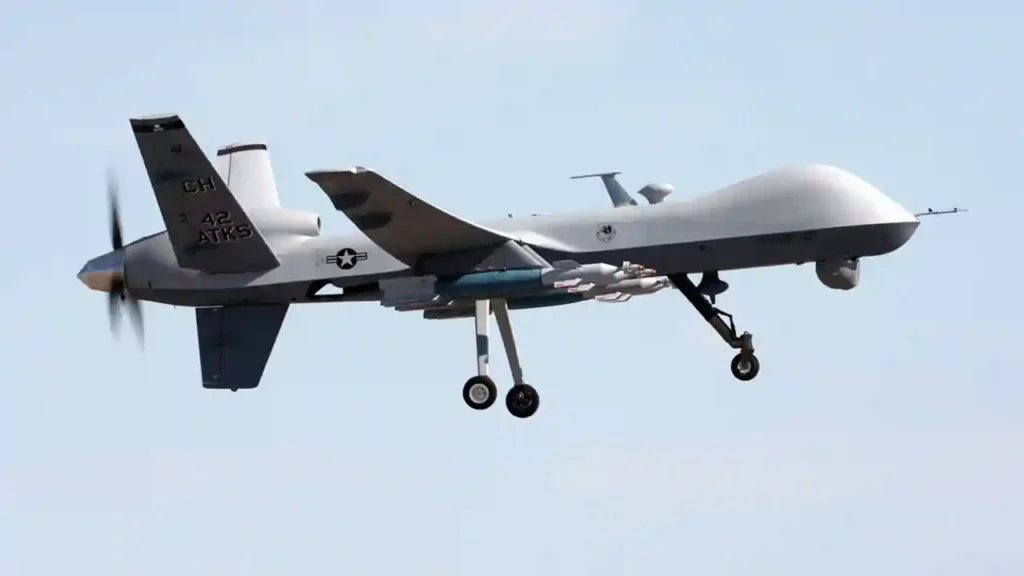
The MQ-9 Reaper is the result of decades of research and development in the field of UAVs. The origins of the Reaper can be traced back to the Predator, which was first flown in 1994 and deployed in 1995.
The Predator was initially used for ISR missions, but after the 9/11 attacks, it was modified to carry Hellfire missiles and laser-guided bombs, becoming the first UAV to perform a strike mission in 2001.
The Predator proved to be effective in targeting terrorists and insurgents in Afghanistan, Iraq, Pakistan, Yemen, and other countries, but it also had some limitations, such as low speed, low payload, and low survivability.
To address these limitations, GA-ASI developed the Predator B, a proof-of-concept aircraft that first flew in 2001. The Predator B had a larger fuselage, longer wings, and a more powerful turboprop engine than the Predator A.
It also had a greater payload capacity, allowing it to carry more sensors and weapons. The Predator B was renamed as the MQ-9 Reaper in 2006, and entered service with the USAF in 2007.
The MQ-9 Reaper was designed to complement the MQ-1 Predator, providing a long-endurance, high-altitude, and multi-mission capability for the warfighter. The drone was also adopted by other countries and agencies, such as the U.S. Customs and Border Protection, the Royal Air Force, the Italian Air Force, the French Air Force, and the Spanish Air Force.
Since its introduction, the MQ-9 Reaper has been involved in numerous operations and conflicts around the world, such as Operation Enduring Freedom, Operation Iraqi Freedom, Operation Inherent Resolve, Operation Odyssey Dawn, Operation Serval, and Operation Barkhane.
The MQ-9 Reaper has been used to conduct ISR, strike, close air support, combat search and rescue, and maritime patrol missions. The drone has also been credited with killing several high-profile targets, such as the Islamic State leader Abu Bakr al-Baghdadi, the Iranian general Qasem Soleimani, and the Taliban leader Mullah Akhtar Mansour.
Features of the MQ-9 Reaper
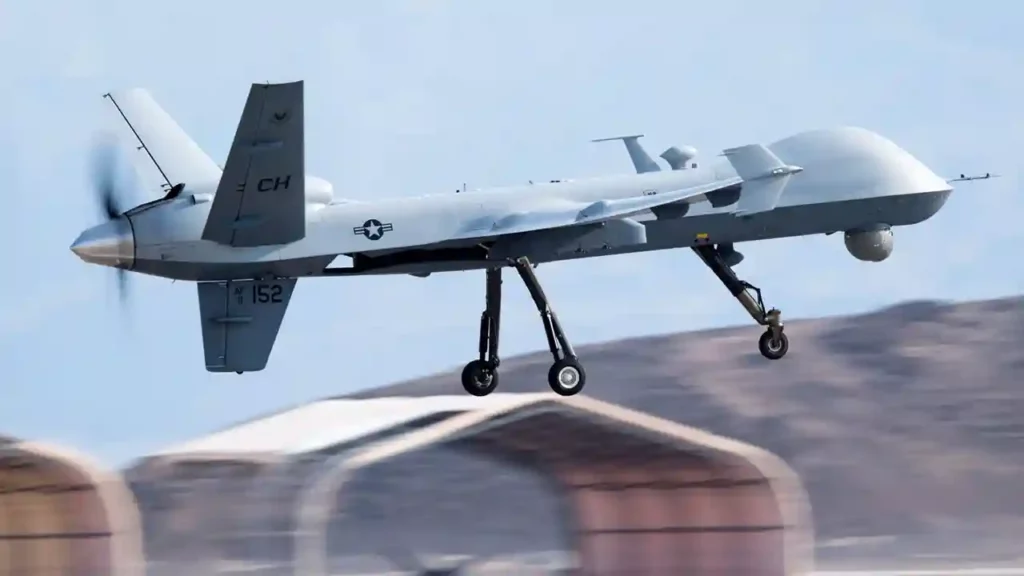
The MQ-9 Reaper is a sophisticated and versatile platform that can perform a variety of missions and tasks. The MQ-9 Reaper has the following features:
MQ-9 Reaper Airframe
The MQ-9 Reaper has a wingspan of 66 feet (20 meters), a length of 36 feet (11 meters), and a height of 12.5 feet (3.8 meters). It has a maximum gross takeoff weight of 10,500 pounds (4,763 kilograms), and a fuel capacity of 3,900 pounds (1,769 kilograms).
The MQ-9 Reaper has a tricycle landing gear, and a ventral fin under the tail to provide stability. The drone has a modular design, allowing it to be configured with different payloads and equipment depending on the mission requirements.
MQ-9 Reaper Engine
The MQ-9 Reaper is powered by a Honeywell TPE331-10 turboprop engine, which produces 950 shaft horsepower (710 kilowatts). The engine is integrated with a digital electronic engine control (DEEC), which improves the engine performance and fuel efficiency, especially at low altitudes.
The engine drives a three-blade constant-speed propeller, which gives the drone a maximum speed of 240 knots (276 mph, 445 km/h), and a cruise speed of 150 to 170 knots (173 to 196 mph, 278 to 315 km/h).
MQ-9 Reaper Avionics
The MQ-9 Reaper is equipped with a fault-tolerant flight control system and a triple-redundant avionics system architecture, which enhance the reliability and safety of the aircraft. The drone has a Ku-band satellite link, which enables it to communicate with the ground control station (GCS) and other assets.
The MQ-9 Reaper also has a line-of-sight data link, which provides a backup communication channel. The drone has a power output of 11.0 kilowatts or 45.0 kilovolt-amperes (Block 5).
MQ-9 Reaper Sensors
The MQ-9 Reaper can carry a variety of sensors and cameras, depending on the mission. The primary sensor of the drone is the AN/DAS-1 Multi-Spectral Targeting System (MTS-B), which consists of an electro-optical/infrared (EO/IR) camera, a laser designator, a laser illuminator, and a laser rangefinder.
The MTS-B provides high-resolution imagery and video, and can identify and track targets day and night. The MQ-9 Reaper can also carry other sensors, such as the AN/APY-8 Lynx multi-mode radar, which can perform synthetic aperture radar (SAR), ground moving target indicator (GMTI), and maritime wide-area search (MWAS) modes.
The MQ-9 Reaper can also carry the AN/ZPQ-1 SeaVue multi-mode maritime radar, which can detect and track surface vessels and low-flying aircraft. The drone can also carry the AN/ALR-69A(V) radar warning receiver (RWR), which can detect and identify radar threats.
The MQ-9 Reaper can also carry the AN/ALQ-211(V)9 Guardian electronic support measures (ESM) system, which can intercept and analyze electronic signals. The drone can also carry the AN/ARC-210 radio, which can provide voice and data communication with other assets.
The MQ-9 Reaper can also carry the AN/DPX-7 Identification Friend or Foe (IFF) transponder, which can identify the aircraft as friendly or hostile. The drone can also carry the AN/DLQ-2 Directional Infrared Countermeasures (DIRCM) system, which can jam and decoy infrared-guided missiles.
The MQ-9 Reaper can also carry the AN/ALE-47 Countermeasures Dispensing System (CMDS), which can dispense chaff and flares to confuse and evade radar and infrared threats.
MQ-9 Reaper Weapons
The MQ-9 Reaper can carry a maximum external payload of 3,000 pounds (1,361 kilograms), which can include various weapons and munitions. The drone has four hardpoints under its wings, and two hardpoints under its centerline. The drone can carry the following weapons:
- AGM-114 Hellfire: A laser-guided air-to-surface missile, which can engage and destroy armored vehicles, bunkers, buildings, and personnel. The drone can carry up to four Hellfires on each of its outer wing hardpoints, for a total of eight Hellfires.
- GBU-12 Paveway II: A laser-guided bomb, which can deliver a 500-pound (227-kilogram) warhead with high accuracy and low collateral damage. The drone can carry one Paveway II on each of its inner wing hardpoints, for a total of two Paveway IIs.
- GBU-38 Joint Direct Attack Munition (JDAM): A GPS-guided bomb, which can deliver a 500-pound (227-kilogram) warhead with high accuracy and all-weather capability. The drone can carry one JDAM on each of its inner wing hardpoints, for a total of two JDAMs.
- GBU-39 Small Diameter Bomb (SDB): A GPS-guided bomb, which can deliver a 250-pound (113-kilogram) warhead with high accuracy and low collateral damage. The drone can carry four SDBs on a BRU-61/A carriage on each of its inner wing hardpoints, for a total of eight SDBs.
- GBU-49 Enhanced Paveway II: A dual-mode guided bomb, which can use both laser and GPS guidance to deliver a 500-pound (227-kilogram) warhead with high accuracy and all-weather capability. The drone can carry one Enhanced Paveway II on each of its inner wing hardpoints, for a total of two Enhanced Paveway IIs.
- GBU-54 Laser JDAM: A dual-mode guided bomb, which can use both laser and GPS guidance to deliver a 500-pound (227-kilogram) warhead with high accuracy and all-weather capability. The MQ-9 Reaper can carry one Laser JDAM on each of its inner wing hardpoints, for a total of two Laser JDAMs.
The MQ-9 Reaper can also carry other weapons and munitions, such as the AIM-9 Sidewinder, a short-range air-to-air missile, and the AGM-176 Griffin, a small and lightweight air-to-surface missile. However, these weapons are not currently operational on the MQ-9 Reaper.
Performance of the MQ-9 Reaper
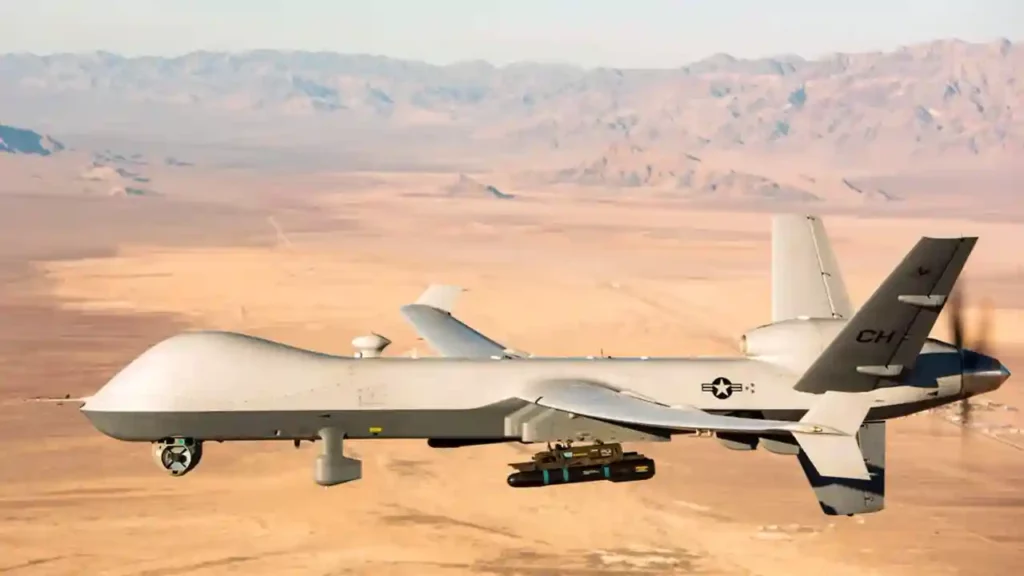
The MQ-9 Reaper is a high-performance aircraft that can operate in various environments and conditions. The MQ-9 Reaper has the following performance characteristics:
- Range: The MQ-9 Reaper has a maximum range of 1,150 nautical miles (1,323 miles, 2,130 kilometers), which can be extended with external fuel tanks or aerial refueling. The MQ-9 Reaper can also perform a ferry flight of 3,682 nautical miles (4,235 miles, 6,815 kilometers) with four external fuel tanks.
- Endurance: The MQ-9 Reaper has a maximum endurance of 27 hours, which can be increased to 42 hours with external fuel tanks or aerial refueling. The MQ-9 Reaper can also loiter over a target area for up to 14 hours with a full weapons load.
- Altitude: The MQ-9 Reaper has a maximum altitude of 50,000 feet (15,240 meters), which allows it to avoid most surface-to-air threats and adverse weather conditions. The MQ-9 Reaper can also operate at low altitudes for better visibility and target identification.
- Payload: The MQ-9 Reaper has a maximum payload of 3,800 pounds (1,724 kilograms), which can include sensors, weapons, and fuel. The MQ-9 Reaper can also carry a 66-foot (20-meter) wingspan version, which can increase the payload to 4,000 pounds (1,814 kilograms).
Future of the MQ-9 Reaper
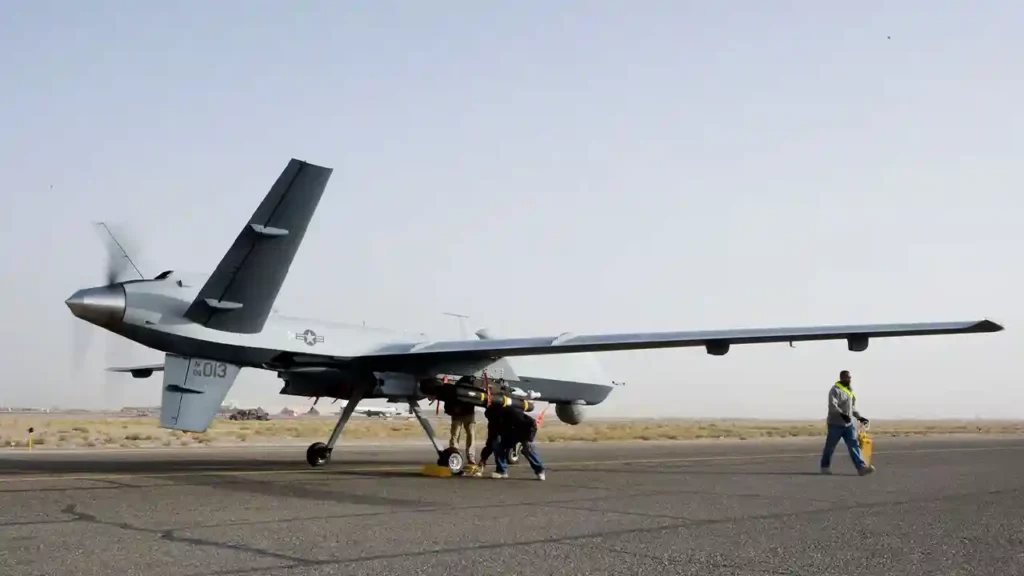
The MQ-9 Reaper is a constantly evolving platform that is undergoing upgrades and enhancements to improve its capabilities and performance. Some of the future developments of the MQ-9 Reaper are:
Block 5
The Block 5 is the latest version of the MQ-9 Reaper, which features a new electrical system, a new avionics system, a new communications system, and a new landing gear. The Block 5 also has a higher maximum takeoff weight, a higher maximum payload, and a higher power output.
The Block 5 also has a new software architecture, which enables the MQ-9 Reaper to integrate with other platforms and systems, such as the F-35 Lightning II and the Advanced Battle Management System (ABMS).
The Block 5 also has a new open mission system (OMS), which allows the MQ-9 Reaper to adapt to different missions and scenarios. The Block 5 also has a new automatic takeoff and landing capability (ATLC), which reduces the workload and risk for the operators.
The Block 5 also has a new detect and avoid (DAA) system, which enhances the MQ-9 Reaper’s ability to operate in civil airspace and avoid collisions with other aircraft. The Block 5 also has a new extended range (ER) version, which has a longer wingspan, a larger fuel capacity, and a longer endurance.
The Block 5 also has a new maritime patrol (MP) version, which has a new maritime radar, a new anti-submarine warfare (ASW) capability, and a new anti-surface warfare (ASuW) capability.
The Block 5 also has a new multi-domain operations (MDO) version, which has a new electronic warfare (EW) capability, a new cyber warfare (CW) capability, and a new space warfare (SW) capability. The Block 5 is expected to be fully operational by 2025.
MQ-9B SkyGuardian
The MQ-9B SkyGuardian is a new variant of the MQ-9 Reaper, which is designed to meet the stringent airworthiness and certification standards of the U.S. Federal Aviation Administration (FAA) and the European Aviation Safety Agency (EASA).
The MQ-9B SkyGuardian has a new design, a new structure, a new engine, a new propeller, a new landing gear, and a new flight control system. The MQ-9B SkyGuardian also has a new DAA system, a new lightning protection system, a new ice protection system, and a new de-icing system.
The MQ-9B SkyGuardian also has a new OMS, a new ATLC, and a new OMS. The MQ-9B SkyGuardian also has a new ER version, which has a longer wingspan, a larger fuel capacity, and a longer endurance.
The MQ-9B SkyGuardian also has a new MP version, which has a new maritime radar, a new ASW capability, and a new ASuW capability. The MQ-9B SkyGuardian also has a new MDO version, which has a new EW capability, a new CW capability, and a new SW capability. The MQ-9B SkyGuardian is expected to enter service with the Royal Air Force in 2024, and with the U.S. Air Force in 2025.
MQ-9C Avenger
The MQ-9C Avenger is a new variant of the MQ-9 Reaper, which is designed to provide a stealthy and survivable capability for high-threat environments. The MQ-9C Avenger has a new design, a new structure, a new engine, a new propeller, and a new landing gear.
The MQ-9C Avenger also has a new jet engine, which gives it a higher speed, a higher altitude, and a lower noise signature. The MQ-9C Avenger also has a new internal weapons bay, which can carry up to 3,500 pounds (1,588 kilograms) of weapons and munitions.
The MQ-9C Avenger also has a new low-observable (LO) technology, which reduces its radar, infrared, acoustic, and visual signatures. The MQ-9C Avenger also has a new OMS, a new ATLC, and a new OMS.
The MQ-9C Avenger also has a new ER version, which has a longer wingspan, a larger fuel capacity, and a longer endurance. The MQ-9C Avenger also has a new MP version, which has a new maritime radar, a new ASW capability, and a new ASuW capability.
The MQ-9C Avenger also has a new MDO version, which has a new EW capability, a new CW capability, and a new SW capability. The MQ-9C Avenger is expected to enter service with the U.S. Air Force in 2026.
Ethical and Legal Issues of the MQ-9 Reaper
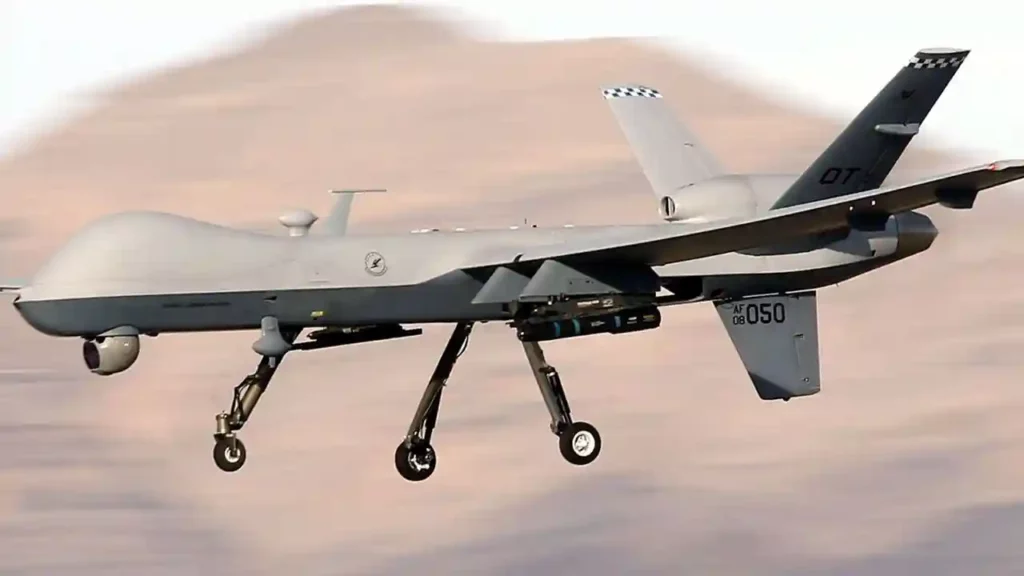
The MQ-9 Reaper is a controversial technology that raises many ethical and legal issues, such as:
- Accountability: Who is responsible for the actions and decisions of the MQ-9 Reaper? Who is liable for the consequences and damages of the drone? How can the drone be held accountable for its mistakes and failures?
- Transparency: How can the drone be monitored and audited for its operations and activities? How can the drone be verified and validated for its compliance and accuracy? How can the drone be explained and justified for its rationale and logic?
- Privacy: How can the drone respect and protect the privacy and dignity of the people and places it observes and affects? How can the drone prevent and avoid the misuse and abuse of the data and information it collects and generates?
- Humanity: How can the drone preserve and promote the human values and rights of the people and places it interacts and impacts? How can the drone maintain and enhance the human dignity and autonomy of the people and places it serves and supports?
- Morality: How can the drone adhere and conform to the moral and ethical principles and standards of the people and places it operates and acts? How can the drone reflect and embody the moral and ethical values and virtues of the people and places it represents and expresses?
MQ-9 Reaper Price
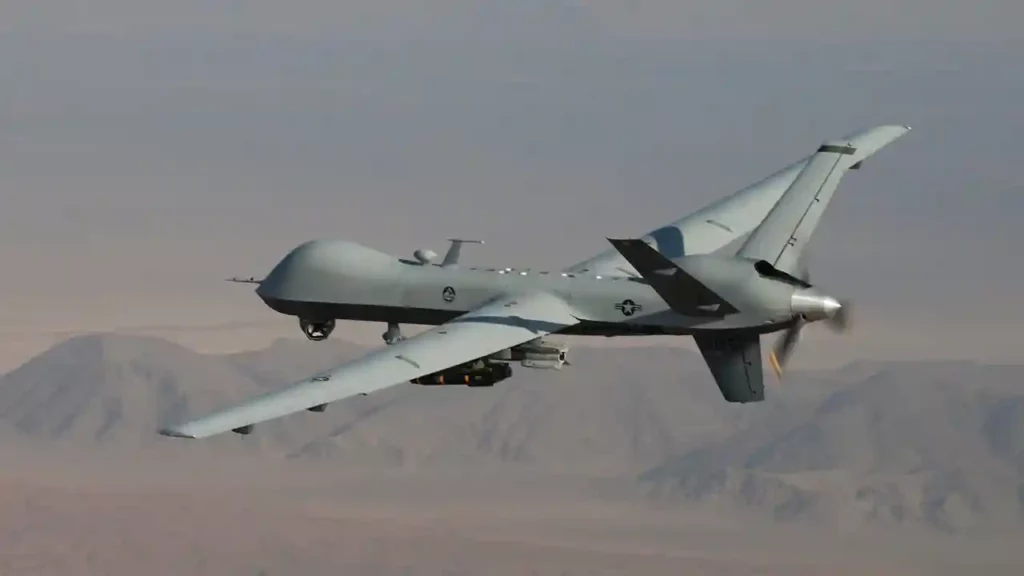
The MQ-9 Reaper is a type of unmanned aerial vehicle (UAV) that can perform surveillance and strike missions. It is used by the United States Air Force and other countries. The drone price is not easy to estimate, because it depends on various factors, such as the number of aircraft, the ground equipment, the development costs, and the modifications.
However, the average unit cost of an MQ-9 Reaper and its share of ground equipment is about $30 million dollars. This is much higher than the cost of some manned aircraft that the drone is compared to, such as the F-16 and the A-10, which cost about $27 million and $19 million respectively. Thedrone price may also vary depending on the production rate, the inflation, and the future upgrades.
The MQ-9 Reaper is the most advanced and lethal UAV in the world. It is a multi-role and multi-mission platform that can perform ISR, strike, and other tasks. It is a high-performance and high-capability aircraft that can operate in various environments and conditions.
It is a constantly evolving and improving platform that is undergoing upgrades and enhancements to improve its capabilities and performance. It is also a controversial and challenging platform that raises many ethical and legal issues that need to be addressed and resolved.
